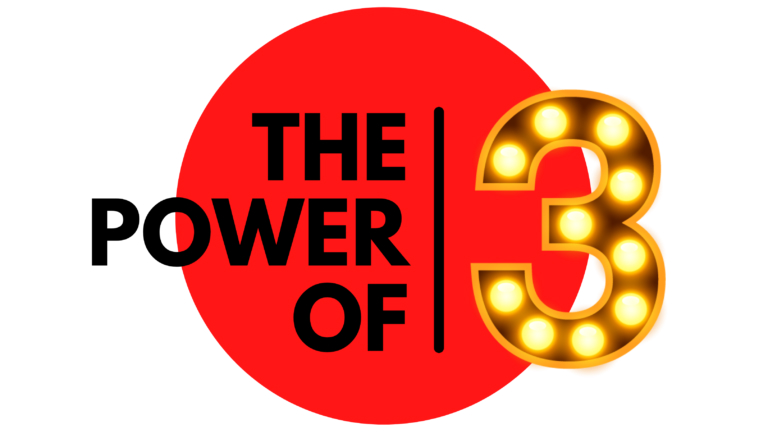To speak like a pro, you need to know the techniques that successful professionals use and then practice them. One common but powerful speaking technique used by great speakers and leaders, is the rule of three.
Why three? Three is the magic number in rhetoric. It makes you sound more compelling, more convincing, and more credible.
Examples of the “Power of 3”
- Location, Location, Location
- “Government of the people, by the people, for the people.” – U.S. President Abraham Lincoln, The Gettysburg Address
- The Ghosts of Christmas Past, Present, and Christmas Yet to Come – Charles Dickens, A Christmas Carol
- “Life, Liberty, and the Pursuit of Happiness” – U.S. Declaration of Independence
- Snap, Crackle, and Pop – Cartoon mascots of Rice Krispies
How Do I Speak Like a Pro?
 Try it. The next time you are in a conversation or are giving a speech, take your communication to the next level with the rule of three. Take your main idea, let’s say “We should offer employees learning and development opportunities” for example.
Try it. The next time you are in a conversation or are giving a speech, take your communication to the next level with the rule of three. Take your main idea, let’s say “We should offer employees learning and development opportunities” for example.
Once you have brainstormed different aspects that relate to that argument, you will be able to see which facts or attributes are related. By finding three buckets to place these pieces of information, you can draw a verbal map for your listener to follow along.
Let’s see a quick demonstration of how this might look.
We should offer employees learning and development opportunities because it leads to higher employee retention.
Vs.
We should offer employees learning and development opportunities because career paths are shifting, we want to retain high-performers, and professional development increases employee engagement.
You can see and hear the difference between those two statements. The second sounds more comprehensive and balanced; Why?
A Brief History Lesson on “The Power of 3”
For over two thousand years, since the time of the ancient Greek philosophers, three-part arguments have dominated Western discourse. Your listeners are more likely to trust your reasoning if you deliver it to them in three-parts. You risk losing their attention by giving them seven or eight reasons and one or two aren’t enough to pack the same punch. Like a chair or table, your argument can’t hold the same weight without three anchors providing structure and stability.
One other reason we tend to remember three parts so easily is that the structure is instilled in us from childhood. Three-part stories comprise a universal way of getting lessons across. Beginning, middle, and end.
Anthropologists have observed that most cultures use the triad structure in their folk tales: three wishes, three witches, three little pigs. One too hot, two too cold and third, just right.
Learn more about the Power of Three and how to take your communication to the next level with 10 Think on Your Feet(R) communication structures:

